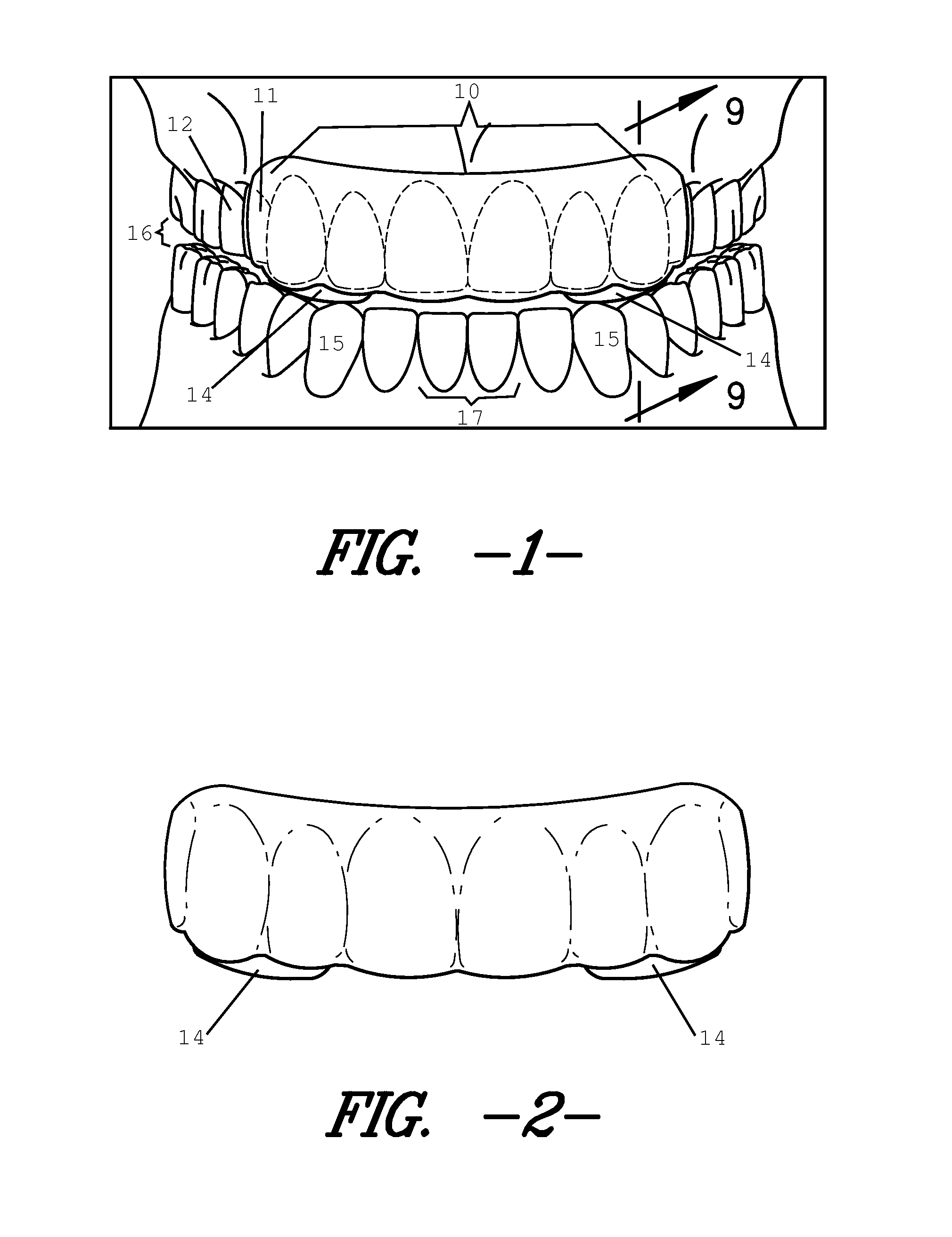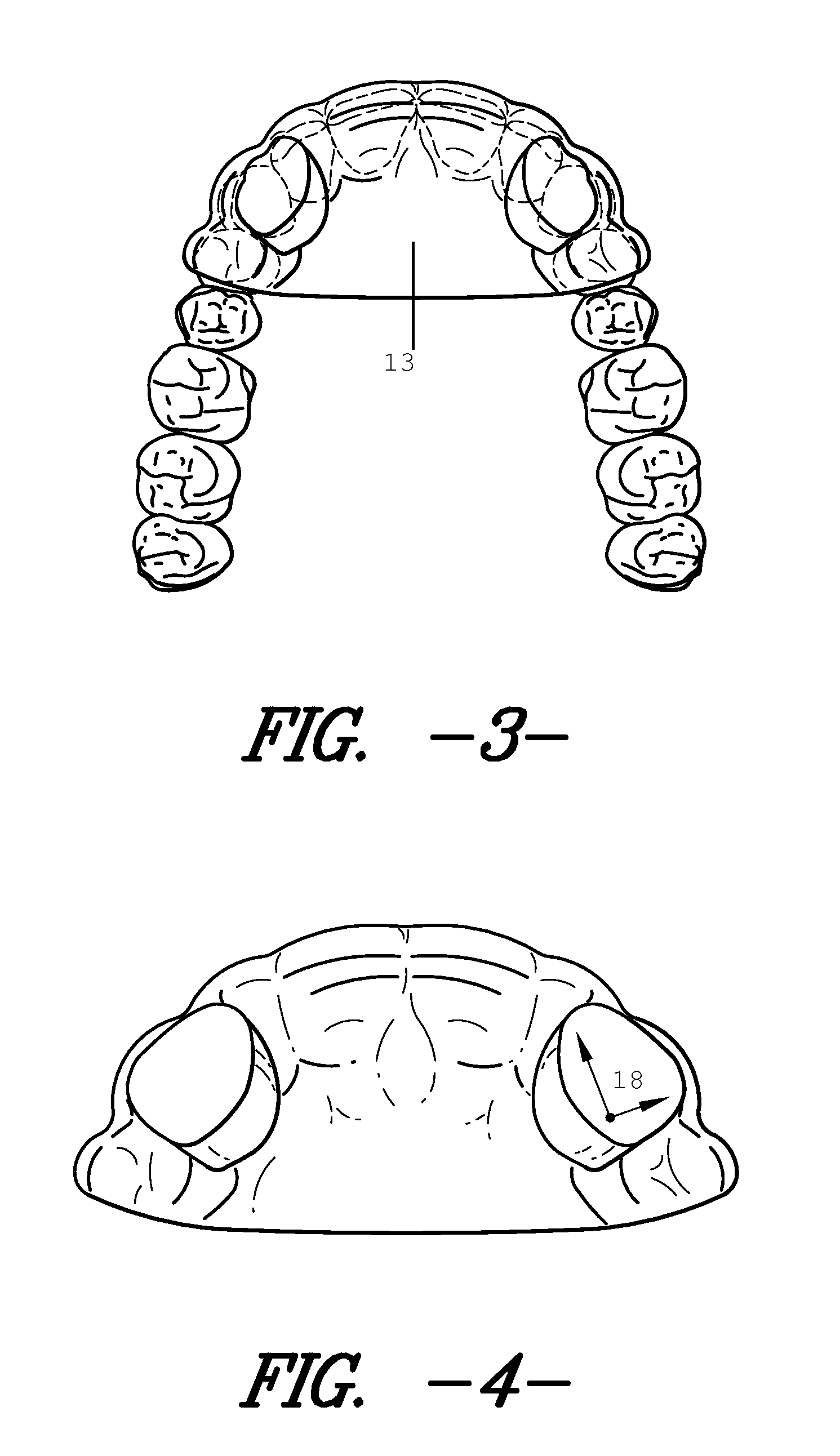Intraoral Discluding Appliance
a technology of oral cavity and appliance, applied in the field of intraoral discluding appliance, can solve the problems of excessive wear of teeth, teeth grinding during sleep, rotation and/or migration of teeth, etc., and achieve the effects of relaxing jaw muscles, reducing or eliminating most jaw-muscle activity, and preventing or minimizing their contraction
- Summary
- Abstract
- Description
- Claims
- Application Information
AI Technical Summary
Benefits of technology
Problems solved by technology
Method used
Image
Examples
Embodiment Construction
[0021]The disclosed appliance will most often be placed in the maxillary arch, but in some cases, e.g. when the patient has an underbite, it will be more appropriately placed in the mandibular arch. In either case, the structure and function of the device itself is unchanged. In the foregoing description, it is to be understood that the term “opposing” refers to the arch which is not covered by the disclosed appliance. For example, the term “opposing cuspids” will in most cases refer to the mandibular cuspids when the disclosed appliance is placed in the maxillary arch, but it is also contemplated that the disclosed appliance may be disposed in the mandibular arch, in which case the “opposing cuspids” would be the maxillary cuspids. In either case, the function of the disclosed appliance is the same.
[0022]In the embodiment illustrated in FIGS. 1 & 5, when placed in either arch, the appliance will cover all anterior teeth 10 and the first bicuspid 11. However, it is also contemplated...
PUM
 Login to View More
Login to View More Abstract
Description
Claims
Application Information
 Login to View More
Login to View More - R&D
- Intellectual Property
- Life Sciences
- Materials
- Tech Scout
- Unparalleled Data Quality
- Higher Quality Content
- 60% Fewer Hallucinations
Browse by: Latest US Patents, China's latest patents, Technical Efficacy Thesaurus, Application Domain, Technology Topic, Popular Technical Reports.
© 2025 PatSnap. All rights reserved.Legal|Privacy policy|Modern Slavery Act Transparency Statement|Sitemap|About US| Contact US: help@patsnap.com



